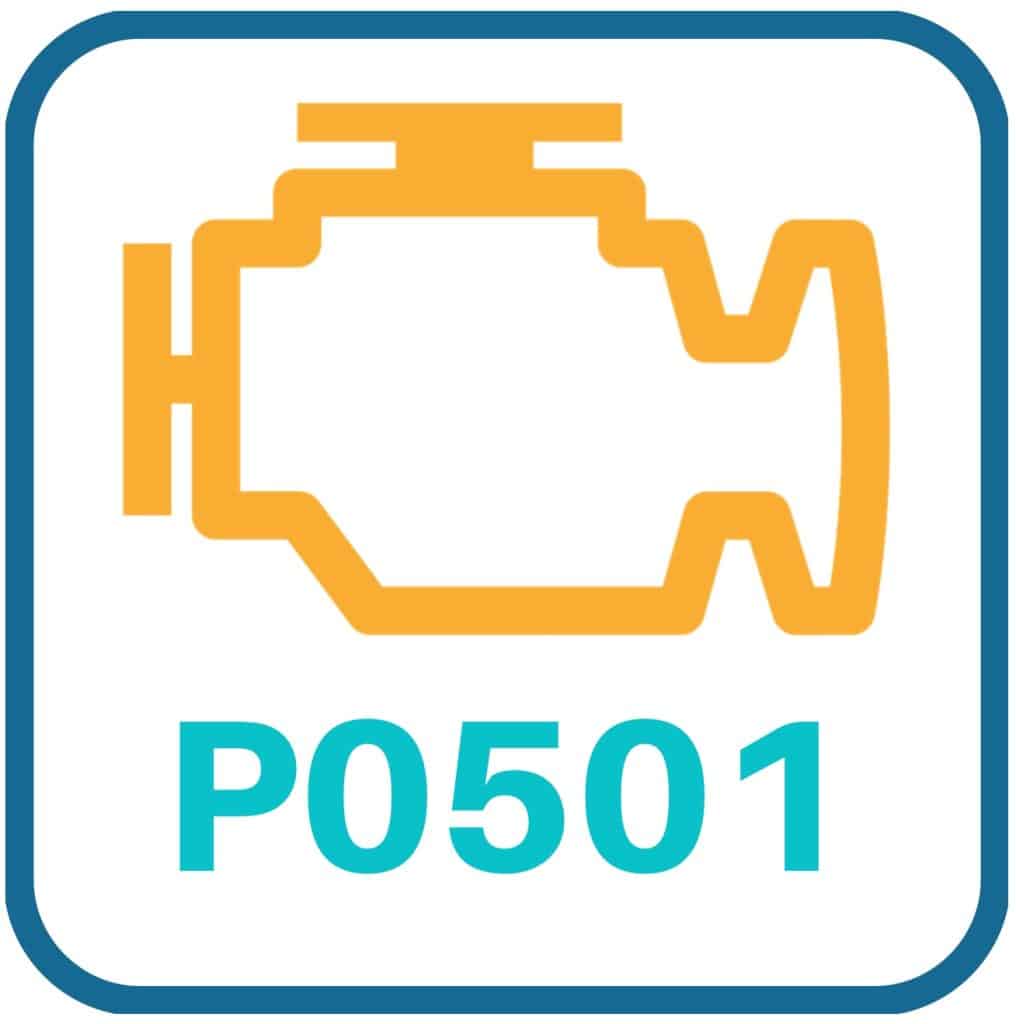P0501 is an OBD2 trouble code that indicates there is an issue with your car or truck’s Vehicle Speed Sensor (VSS). It occurs when your vehicle’s Powertrain Control Module (PCM) gets a signal from the VSS outside its normal operating range (in terms of voltage).
While P0501 is a generic code (it has the same meaning for all vehicles), it is most commonly observed in Hyundais and Chryslers.

Note: If you have gotten P0501 right after changing your vehicle’s tire size, it’s likely the PCM needs to be recalibrated for the change in size.
P0501 Definition: VSS – Range/Performance
P0501 is a pretty easy code to understand. Here’s both parts of its definition:
Vehicle Speed Sensor
The vehicle speed sensor has two main functions.
- The first is to provide data to the speedometer. It’s not uncommon for the speedometer to be erratic or unmoving with P0501.
- The second function of the VSS is to provide speed data to the PCM. The PCM needs to know how fast the vehicle is going to support many vehicular functions. Common affected systems include traction control, cruise control, ABS, and even transmission shift points.
The VSS can be located on the transmission tail shaft, around the wheel hub, or (on older models) be integrated with a mechanical speedometer. Where it’ll be located on your vehicle will depend on the make, model year, and transmission type.
Range/Performance
The signal coming from the VSS is not within its normal operating range. The voltage could be erratic, too high, or too low.
P0501 Symptoms
Here are the most common symptoms of P0501:
- Check engine light
- Limp mode
- Erratic shifting (likely shifting too early)
- ABS light
- Traction control light
- Speedometer not working properly
If the ABS and traction control lights are on, and P0501 is the only code stored in your PCM’s memory, fixing the code’s cause should turn them off.
P0501 Causes and Diagnosis

Here are the most common causes of P0501 and a good order to check them in:
1. Check For Other Codes
The first thing you should do is document all codes and data before touching anything.
It’s likely another code may shed more light on what’s going on. If the VSS voltage is too low, you may also get P0502. If it is too high, you’re likely to see P0503. That’s a good starting point.
2. Inspect the VSS Wiring
Next, locate the VSS and inspect the wiring harness going to it. You are looking for broken, or frayed wiring. Wiring issues are a very common cause of P0501. If any wiring looks bad, repair it and clear the code.
3. Check the Sensor Voltage
Check the voltage at the VSS sensor. If it is within factory specs, it’s likely that the VSS sensor has gone bad and needs to be replaced.
Conclusion
The good news with P0501 is that there aren’t many common causes. Replacing the VSS is far and away the most common fix. Good luck repairing your vehicle!
